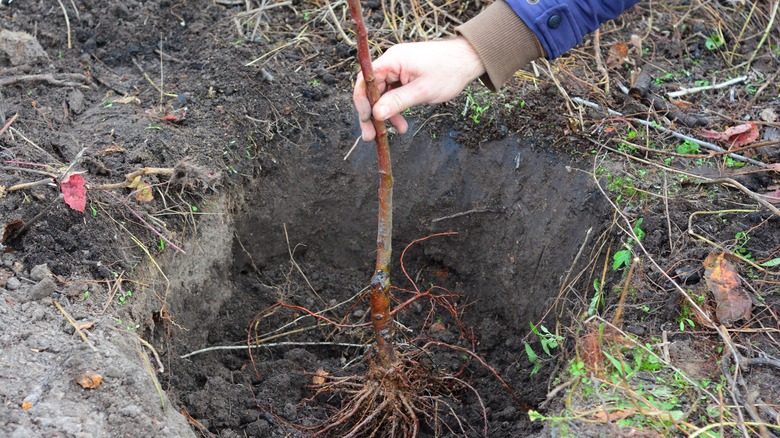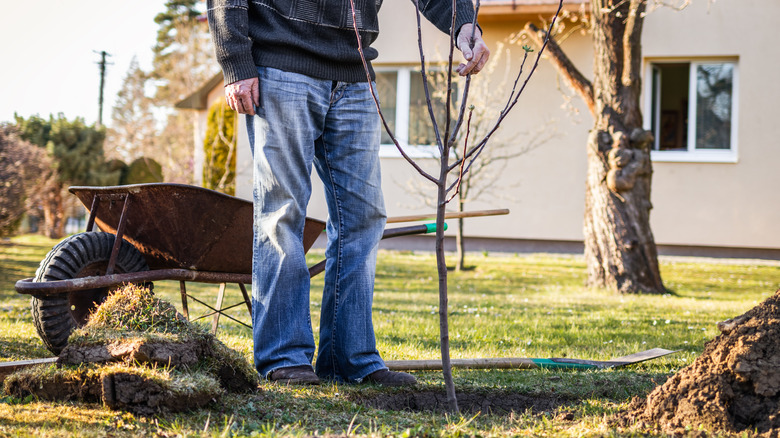The Downsides Of Bare-Root Trees You Should Be Aware Of Before Planting
Are you planting trees for a fruit orchard, shade, or privacy? If you are, you'll face an inevitable dilemma when buying the saplings: whether to buy bare-root or potted trees. At a glance, bare-root trees seem like a much better deal — they're cheaper, they mature faster, and they come in a greater variety than their potted counterparts. But before you make the decision, you should understand and consider some of the downsides bare-root trees have, and their implications for your planting efforts.
The most significant downsides to bare-root trees are their limited window of availability, and short planting time frame. Nurseries dig up and ship these trees while they're still dormant. So, you'll generally only find bare-root trees at the beginning of spring or at the end of fall. Once you buy a bare-root tree, you need to plant it as soon as possible before the tree leaves dormancy, and because the roots should not remain soil-free for long.
Complicating matters is the need for ideal weather conditions on the day of planting – calm and cloudy is best. Windy weather can make it difficult to set the saplings upright, and a sunny day can cause the trees to exit dormancy — something you don't want happening until the trees are in the ground. Trying to plant the trees as soon as possible after purchase while waiting for the perfect day can be a nerve-wracking experience, and you need to keep the trees in a dark, cool location until the right weather arrives. As long as you are ready to handle the challenges, bare-root trees may still be a more viable alternative to their potted counterparts.
Bare-root trees may still be a viable option for your yard
If the drawbacks we discussed above don't deter you, bare-root trees may be a good option. In fact, you may find that buying a bare-root tree offers several advantages beyond mere savings. For one, bare-root trees take less time to get established once they're in the ground. Their roots are healthy, and can quickly acclimate to the new environment. Meanwhile, trees that have been confined to pots for some time are usually root-bound and struggle to adapt once planted. In some cases, being root-bound in the early stages of life can cause lasting health issues and shorten a tree's lifespan.
Buying trees with roots that are not concealed by the planting medium offers another advantage — you can see what the roots look like. If the trees' roots show signs of root rot, such as soft texture or dark brown color, you can avoid future disappointment and skip the purchase. You wouldn't be able to subject a potted tree to the same kind of root inspection. Unfortunately, the more obvious symptoms of root disease, such as wilting leaves or discoloration at the base of the tree, take longer to manifest so the condition can go undetected for a while.
Does the ability to assess a tree's root health, and a tree's tendency to get established fast outweigh drawbacks like a short planting time frame? Then buying bare-root trees may well be a more viable alternative to potted plants. Just make sure you do your homework and familiarize yourself with the right method for planting bare-root trees in your yard.

